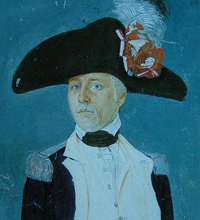The Republic of Swellendam Het Republiek Van Swellendam (Dutch) | |||||||||||
|---|---|---|---|---|---|---|---|---|---|---|---|
| 17 June 1795–November 1795 | |||||||||||
 Republic of Swellendam, as shown in red. | |||||||||||
| Capital and largest city | Swellendam 34°01′23″S 20°26′24″E / 34.02306°S 20.44000°E | ||||||||||
| Demonym(s) | Swellendammer (None officially) | ||||||||||
| Government | Republic | ||||||||||
| Hermanus Steyn | |||||||||||
• National Commander | Petrus Delport | ||||||||||
• Head of National Board | Jacobus Steyn | ||||||||||
| Independence from the Netherlands | |||||||||||
| History | |||||||||||
• Revolt against the Dutch | April 1795 | ||||||||||
| 17 June 1795 | |||||||||||
| November 1795 | |||||||||||
| Area | |||||||||||
• Total | 27,258 km2 (10,524 sq mi) | ||||||||||
| |||||||||||
| Today part of | South Africa (Western Cape and Eastern Cape) | ||||||||||
The Republic of Swellendam was founded in 1795 with the dissatisfaction towards the Dutch East India Company caused the burghers of Swellendam to revolt, and on 17 June 1795 they declared themselves a republic. Hermanus Steyn was appointed as President of the Republic of Swellendam.[1] The burghers of Swellendam started to call themselves "national burghers" – after the style of the French Revolution. However, the Republic was short-lived and was ended on 4 November 1795 when the Cape was occupied by the Kingdom of Great Britain.[2]



